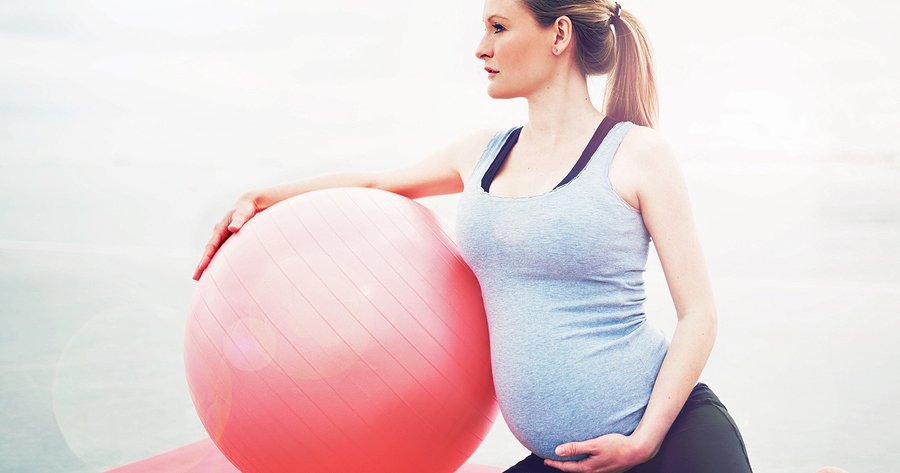There are lots of advantages to being physically active on a regular basis. Exercise helps control your weight, reduces your risk of numerous diseases, and is a proven mood booster. For women, it can also help keep your body strong and fit for the rigors of pregnancy and delivering the baby. And now, new research is attributing additional benefits to working out prior to getting pregnant, suggesting that it can help moms-to-be avoid developing pelvic girdle pain.
The study, which took place at the Norwegian Institute of Public Health in Oslo, found that women who exercise regularly before they conceive may have a lower risk of experiencing pelvic girdle pain over the course of the pregnancy.1 Owe, Katrine Mari; et al. “Exercise level before pregnancy and engaging in high-impact sports reduce the risk of pelvic girdle pain: a population-based cohort study of 39,184 women.” British Journal of Sports Medicine. 4 October 2015. Accessed 21 October 2015. http://bjsm.bmj.com/content/early/2015/09/15/bjsports-2015-094921.short The subjects were more than 39,000 Norwegian women who conceived their first child between 2000 and 2009. They were all involved in a broader long-term study focusing on the overall health of the women and their children.
The participants were interviewed during checkup appointments when then were approximately four months pregnant. Many of the questions focused on how often they exercised and what types of workouts they typically performed during the three-month period prior to conception. More than half of the volunteers reported exercising a minimum of three times per week in the months before pregnancy, and nearly all of them had continued to take part in regular physical activity through their pregnancy to that point. A surprisingly small number–only seven percent–of the women admitted to not working out at all prior to pregnancy.
The subjects were then followed up with again approximately seven-and-a-half months into their pregnancy. By the third trimester, around 10 percent of the participants were experiencing pelvic girdle pain, which is characterized by discomfort in the abdominal area, lower back, or around the thighs and can become severe in some cases. But those volunteers who had not been physically active were more likely to have pelvic girdle pain, as it was seen in approximately one in eight, or 12.5 percent, of this group.
In general, the volunteers who reported having pelvic girdle pain were more likely to be smokers, overweight, or have a history of depression or lower back pain. In contrast, those who had no pelvic girdle pain tended to have healthier habits, maintained a normal weight, and did not have prior depression or lower back pain. In addition, the group that didn’t experience pelvic girdle pain was much more likely to have been working out between three and five times a week in the months before pregnancy.
Not only was frequency of exercise shown to be beneficial, but the type of activity mattered as well. The women who reported regular high impact workouts including running, netball (which is similar to basketball), jogging, aerobics classes, or orienteering had the lowest risk of developing pelvic girdle pain. There was no advantage found to exercising more frequently than five times per week. However, there was good news for the relatively sedentary. The participants who reported exercising only one or two times per week still had less of a risk of pelvic girdle pain than did their peers who performed no physical activity whatsoever.
Ultimately, pelvic girdle pain may not be a dangerous condition for mother or baby, but if there are easy ways to avoid increasing your chances of enduring this discomfort as your pregnancy goes on, it seems silly not to get involved in some sort of workout. Plus, it’s good for your child. A 2015 study at Washington University School of Medicine in St. Louis, Missouri showed that exercise during pregnancy may help decrease the risk of having a baby born with a heart defect.2 Schulkey, Claire E.; et al. “The maternal-age-associated risk of congenital heart disease is modifiable.” Nature. 1 April 2015. Accessed 22 October 2015. http://www.nature.com/nature/journal/v520/n7546/full/nature14361.html Even if you only start off doing it once or twice a week, the physical activity will make a difference. You will quickly see that it’s worth finding a half an hour to do whatever type of workout you enjoy to become healthier. And when you’re ready to think about starting a family, you will likely benefit in a multitude of ways.
References
| ↑1 | Owe, Katrine Mari; et al. “Exercise level before pregnancy and engaging in high-impact sports reduce the risk of pelvic girdle pain: a population-based cohort study of 39,184 women.” British Journal of Sports Medicine. 4 October 2015. Accessed 21 October 2015. http://bjsm.bmj.com/content/early/2015/09/15/bjsports-2015-094921.short |
|---|---|
| ↑2 | Schulkey, Claire E.; et al. “The maternal-age-associated risk of congenital heart disease is modifiable.” Nature. 1 April 2015. Accessed 22 October 2015. http://www.nature.com/nature/journal/v520/n7546/full/nature14361.html |











